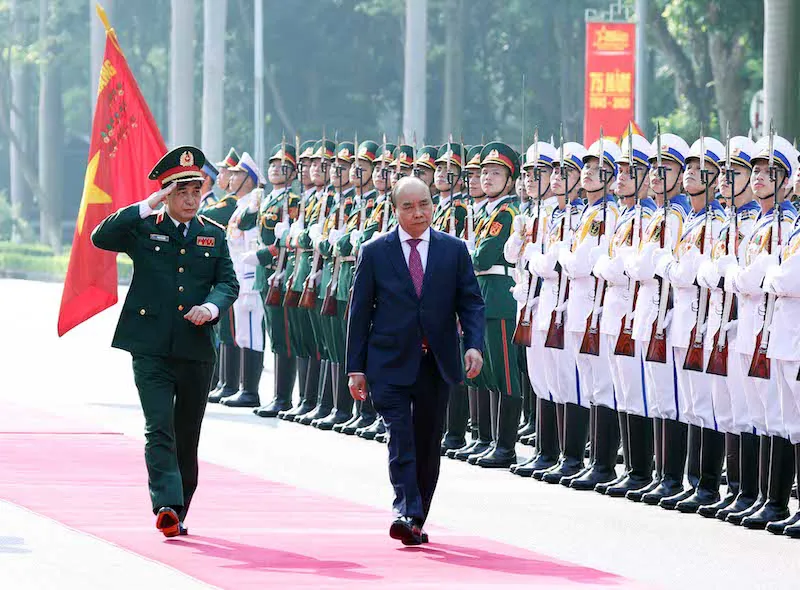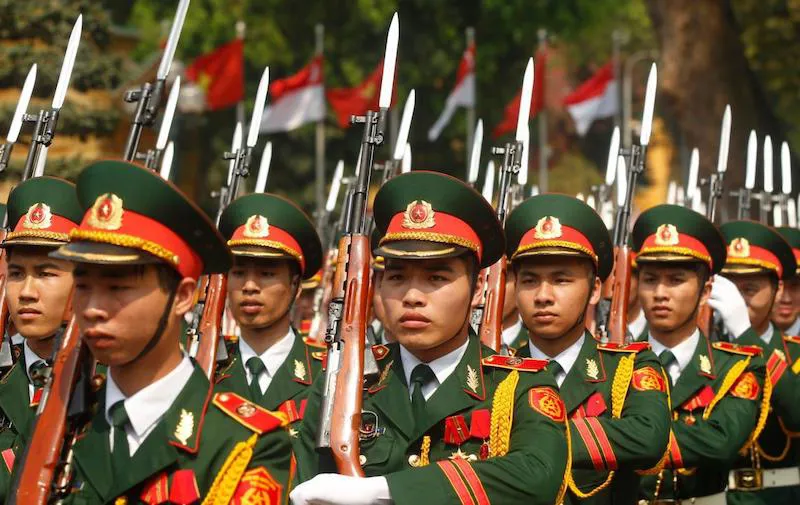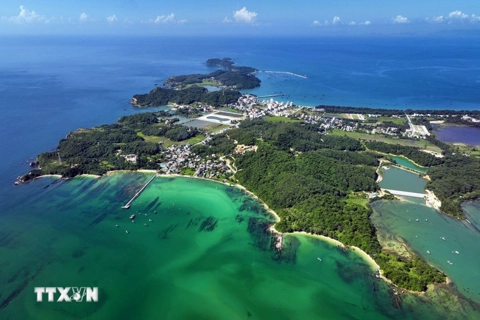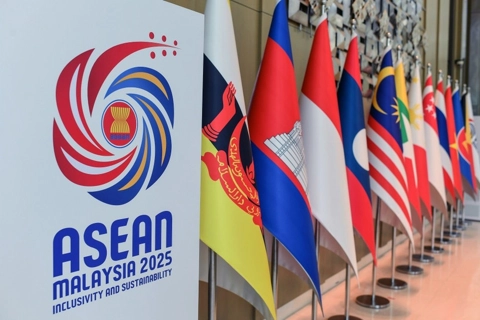Vietnam intensifies investment in modernizing army: PM
Vietnam ranks 22nd among 138 countries and territories in the 2020 Military Strength Ranking.
Vietnam’s Prime Minister Nguyen Xuan Phuc has said that the government will give special attention to equipping the army with advanced technologies and equipment.
| Vietnam’s Prime Minister Nguyen Xuan Phuc works with the General Staff of the Vietnam People's Army on September 6. Photo: VGP |
The investment, with a focus on streamlining the army's organization, aims to build the modern army by 2030, Phuc said at a meeting with the General Staff of the Vietnam People’s Army on September 5.
This is followed by the continuous implementation of the Politburo’s Conclusion No.16-KL/TW dated July 7, 2017 on trimming the army and restructuring military businesses, and the Politburo’s Resolution No.15-NQ/TW dated on January 6, 2012 on modernizing the army in the 2011-2020 period.
Vietnam normally gives few details about policies for the army in terms of spending and organization.
Vietnam moves in global military strength ranking
According to the US-based Global Firepower, Vietnam jumped one spot to 22nd out of 138 countries and territories in the 2020 Military Strength Ranking.
Vietnam remains the second strongest military power in Southeast Asia, behind Indonesia.
| Vietnam attempts to build a mordern army by 2030. Photo: Reuters |
The ranking utilizes over 50 individual factors to determine a given nation’s PowerIndex score with eight categories ranging from manpower, airpower, land forces, naval forces, natural resources, geographical features, finances, to logistics.
Regarding land forces, the country has 2,615 tanks (ranking 10th), 2,530 armored vehicles, 70 self-propelled artillery, 1,000 towed artillery, and 85 rocket projectors.
Vietnam also ranks 35th globally in strength of the navy with 65 ships, including six submarines.
Its airpower strength also has the same ranking.
The total military personnel are 5.48 million, accounting for 5.6% of the total population. Of the overall figure, the reserve personnel hit 5 million, ranking 1st among 138 ranked countries. The fit-for-service is 41.8 million (13rd).
After the end of the Vietnam War in 1975, Vietnam, the country of 97 million people, has applied compulsory conscription for men of 18 to 27 for the enlistment of two years while the status for women is voluntary.
The report also reveals that Vietnam’s defense budget is around US$5.5 billion, rising from US$3.3 billion in the previous version.
Maritime militia
Also on September 5, PM Phuc highlighted the importance of strengthening the militia, mainly maritime militia.
Late last year, Colonel General Phan Van Giang, deputy defense minister and chief of the General Staff of the Vietnam People’s Army, said the country will build maritime militias in 14 provinces across the country with an aim to contribute to the sovereignty protection and maritime economy.
A plan on establishing maritime militias was proposed in July 2018 by the Central Military Commission to the Politburo, the Secretariat, and the government.
According to the Central Military Commission, the operations of maritime militias are urgent and crucial to the protection of territorial waters in the current circumstance
According to an article posted on the Washington-based Center for Strategic & International Studies (CSIS)’ Asia Maritime Transparency Initiative (AMTI), Vietnam’s 2019 Defense White Paper reaffirms the motto of “defending the Homeland from afar,” which includes exhausting all non-military channels to keep the homeland from being threatened in the first place.
While the armed forces remain “at the core” of this system, the goal of the “all-people” defense doctrine is to use these other capacities to “prevent and push back the risks of war.”













